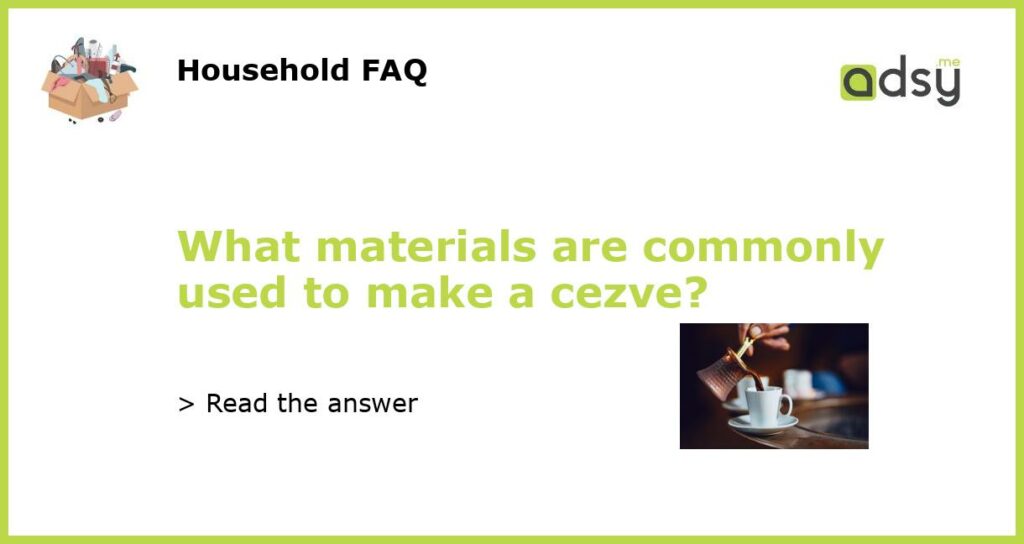The Basics of a Cezve
A cezve is a traditional, small copper or brass pot used in Middle Eastern and Mediterranean countries to make coffee. This pot is used to create a type of coffee known as Turkish coffee, which is made by brewing very finely ground coffee beans in water directly in the pot. The cezve’s size and shape make it perfect for creating a strong, thick, and aromatic coffee that is typically served in small cups. But what materials are commonly used to make a cezve? Let’s dive in!
Copper
Copper is one of the most common materials used to make a cezve. Copper cezve pots are popular for their beautiful, shiny exterior and their excellent heat conductivity. This results in a pot that heats up quickly and distributes the heat evenly, making it perfect for creating a perfect cup of Turkish coffee. Copper cezve pots can be found with a variety of finishes, from highly polished to brushed or oxidized.
Brass
Brass is another popular material used to make a cezve. Brass cezve pots are often decorated with intricate designs, making them a beautiful addition to any kitchen. Like copper, brass is an excellent heat conductor, and it heats up very quickly, making it perfect for brewing the perfect cup of Turkish coffee. Brass cezve pots can also be found in a variety of finishes, from highly polished to brushed or oxidized.
Stainless Steel
Stainless steel is becoming increasingly popular as a material for cezve pots because it is durable, easy to clean, and resistant to corrosion. Although it does not conduct heat as well as copper or brass, stainless steel cezve pots are often designed with a tri-ply base that combines layers of stainless steel, aluminum, and copper to provide excellent heat conductivity. Stainless steel cezve pots are often a more affordable option than copper or brass.
Anodized Aluminum
Anodized aluminum cezve pots are a popular option for those who prefer a lighter and more affordable alternative to copper or brass. Anodized aluminum is durable, lightweight, and easy to clean. It is also a good heat conductor, although not as good as copper or brass. Anodized aluminum cezve pots are often designed with non-stick coatings to make clean-up even easier.
Choosing the Perfect Cezve Material
When it comes to choosing the perfect material for your cezve pot, it ultimately comes down to personal preference. Copper and brass are beautiful and highly conductive, but can be more expensive. Stainless steel and anodized aluminum are more affordable and easier to clean, but may not provide the same heat conductivity as copper or brass. No matter which material you choose, a cezve pot is an excellent addition to any coffee-lover’s collection.






